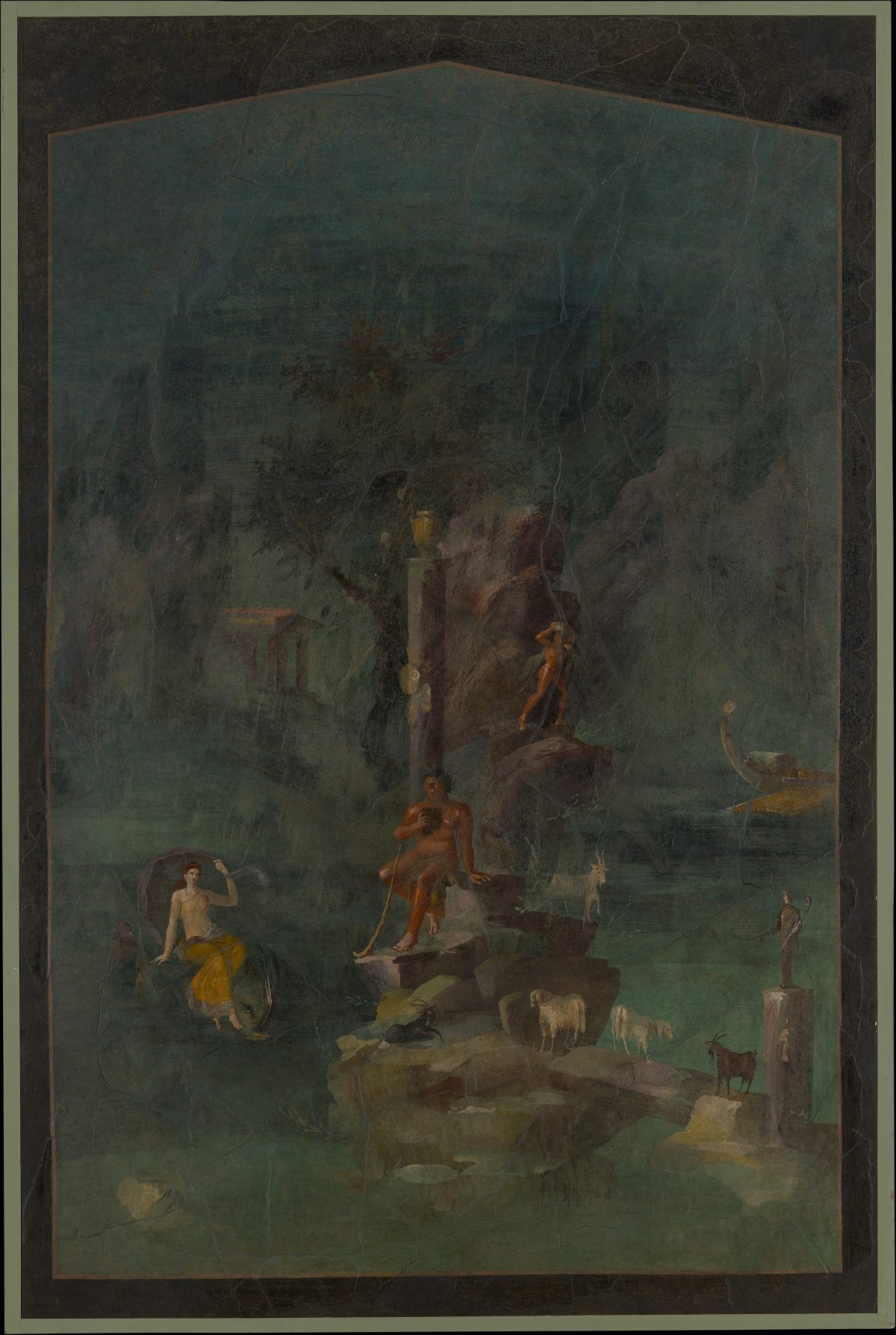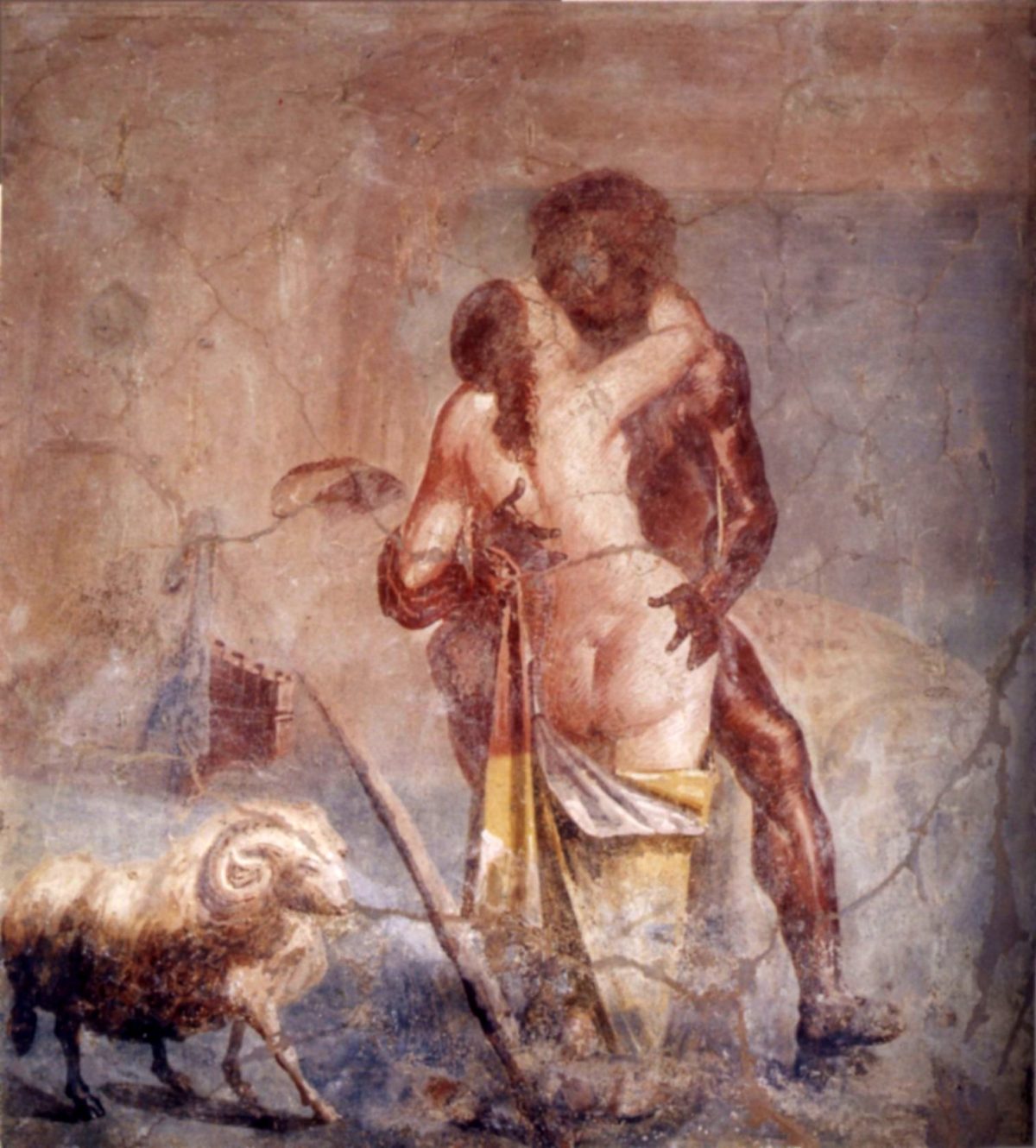
Elegiac poetry, with its focus on the personal travails of (often heterosexual) erotic love, flourished in the late first century BCE during the rise of Rome’s first emperor, Augustus. Developing from Catullus’s amatory verses of the mid-50s BCE, elegy enjoyed a brief prime in the anguished works of Tibullus, Propertius, and Sulpicia, then was brought to its climax — and conclusion — by Ovid. Hérica Valladares’s new book, Painting, Poetry, and the Invention of Tenderness in the Early Roman Empire (Cambridge University Press), traces the connections between this most intimate of Rome’s poetic genres and contemporaneous depictions of amatory “tenderness” in Roman homes. By yoking elegy and wall painting, Valladares refreshingly merges two interpretive modes often employed in isolation, those of the literary critic and of the art historian.

The idealization of romantic pleasures was a response to Augustus’s encroachment upon the lives of the elite, as he mandated marriage among aristocratic households and encouraged childbearing. The lovers of elegiac poetry responded defiantly by rejecting legitimate marriage altogether, championing extramarital love and individual desire. This romantic turn had its corollary in a new style of wall painting that, as Valladares argues, similarly valorized the life of private sensuality. This new style began in the households of the Roman elite and grew quickly popular, with examples found also in the homes of Pompeii’s merchant class. In these depictions, an emotionally “pregnant” moment between lovers is captured through gesture, touch, and gaze, with the interior of the house, symbolized by the bed, becoming a locus of sumptuous erotic leisure.
Valladares also applies this elegiac model to mythological depictions within domestic interiors, showing how Romans of the early empire reframed myth’s violent “monsters” as tender lovers. Depictions of Polyphemus, the man-eating Cyclops of the Odyssey, fuse the pastoral mode familiar from Virgil’s Eclogues with the eroticism of elegy as he sings songs of love to the nymph Galatea.

Such paintings either counterbalance Polyphemus’s brutality with a moment of erotic tenderness (as at the Augustan villa at Boscotrecase, above, which pictures his wrath against Odysseus alongside his love for Galatea) or transform the Cyclops into a youthful, even handsome, elegiac lover (as at the House of the Ancient Hunt in Pompeii, below).

The child-murdering Medea (along with others, such as Phaedra and Helen) similarly becomes in Roman wall painting an elegiac heroine gripped by inner turmoil, a characterization Valladares rightly connects to Ovid’s Heroides, a set of elegiac letters fictitiously penned by mythological heroines at critical, emotionally laden moments within their story. Such paintings not only domesticate myth but also set domestic life on par with mythology, transforming both realms into sites of desire and intense private emotion.

But a key difference emerges between elegy and domestic painting. Whereas love elegists refuse to take part in traditional family life and depict the relationship between mistress and lover as a kind of radical, alternative household, wall painting moves toward the conservative, fusing the marital household to elegiac eroticism. Illicit love thereby transforms into a new model of conjugal devotion. In a painting from the House of Terentius Neo in Pompeii, for instance, the writing tablet and stylus held by the wife clearly place her in the role of the docta puella, the “learned girl,” so desired by the elegiac lover.

Valladares could have strengthened her ideas further by bringing in non-elegiac poetry that similarly usurps these erotic motifs and yokes them to marriage. For instance, in the Silvae (60s and 70s CE), the poet Statius repeatedly assigns elegiac roles to marital partners, especially when describing his own marriage. It is this domesticated version of elegiac love that ultimately prevails, reframing matrimony not as the antithesis to but the fulfillment of erotic desire — a formulation of marriage that of course reemerges in the present day.
Valladares’s book nicely complicates the Rome of our popular imagination. The Romans have become so tied to imperialism and brutality that “Roman tenderness” sounds like an oxymoron. But tenderness and brutality are not always easily disentangled — Roman imperialism in fact enabled this shift toward the personal. Roman private leisure, after all, relied upon the enslavement of others and the cultural appropriation of Greek art and literature. Tenderness and brutality stand juxtaposed. By focusing on the softer side of the Romans, Valladares shines a welcome light on their complexity.
Painting, Poetry, and the Invention of Tenderness in the Early Roman Empire (2021) by Hérica Valladares is published by Cambridge University Press and available online at Bookshop.
0 Commentaires